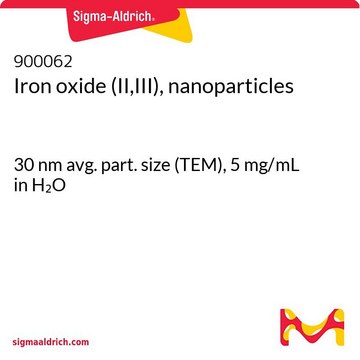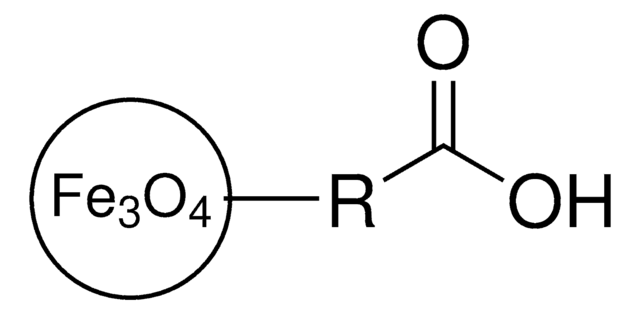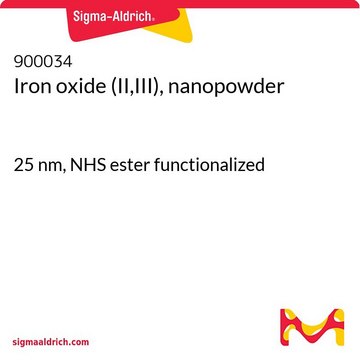900042
Iron oxide (II,III), nanoparticles
25 nm avg. part. size (TEM), 5 mg/mL in H2O
About This Item
Recommended Products
form
dispersion
nanoparticles
Quality Level
concentration
5 mg/mL in H2O
avg. part. size
25 nm (TEM)
storage temp.
2-8°C
Looking for similar products? Visit Product Comparison Guide
Related Categories
Application
Legal Information
WGK
WGK 3
Flash Point(F)
>230.0 °F
Flash Point(C)
> 110 °C
Choose from one of the most recent versions:
Already Own This Product?
Find documentation for the products that you have recently purchased in the Document Library.
Customers Also Viewed
Articles
Professor Yu Cheng and co-workers look at the recent advances of nanoparticle-based imaging contrast agents for in vivo stem cell tracking. They provide an in-depth look at popular in vivo imaging techniques, magnetic resonance imaging, fluorescence imaging, ultrasound imaging, and photoacoustic imaging.
Professor Hui Mao explores the use of superparamagnetic iron oxide nanoparticles (INOPs) that offer an alternate contrast-enhancing mechanism.
Professor Yadong Yin (University of California Riverside, USA) examines both direct (thermal decomposition, solvothermal, hydrothermal) and indirect (templated) synthesis methods of magnetite nanocrystals and reviews in detail the landscape of these various synthetic methods for magnetite nanocrystal and their applications in magnetic assembly, magnetic hyperthermia, and Li-Ion batteries.
Global Trade Item Number
| SKU | GTIN |
|---|---|
| 900042-5ML | 4061833218051 |
Our team of scientists has experience in all areas of research including Life Science, Material Science, Chemical Synthesis, Chromatography, Analytical and many others.
Contact Technical Service







